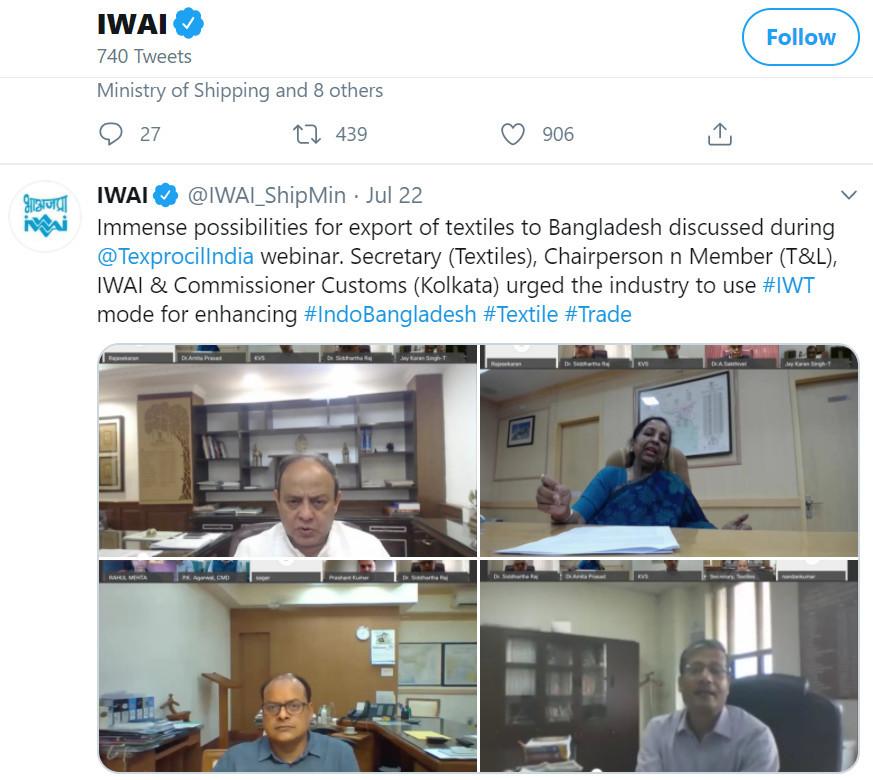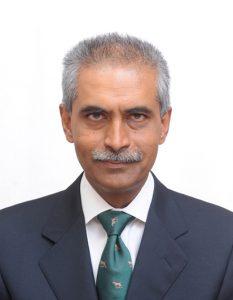“Let us keep an optimistic outlook for the future, even if it appears bleak at the moment!” is the message for exporters from Chairman, The Cotton Textiles Export Promotion Council (Texprocil). His full message follows:
The first fortnight of July marked the third anniversary of Goods and Services Tax (GST), India’s biggest tax reform, introduced on July 1, 2017. It is by all accounts a landmark legislation which succeeded in replacing the fragmented State and Central based law on indirect taxes. It has also led to the setting up of one of the world’s biggest online tax compliance systems – the GSTN.
While the achievement is undoubtedly historic, the experience of the trade has been mixed as there are delays in getting input tax credits, procedures are cumbersome and issues of inverted duty structure remain unresolved.
We remain hopeful that the GST law gets further simplified and the industry is able to overcome the challenges in complying with the law.
Friends, in today’s trying times, whilst we continue to grapple with internal adjustments, the global estimates continue to point towards the recessionary challenges before us.
Covid Pressures Remain
In 2020, the world seems to be shaken (naturally so) by the projections by IMF and WTO on the likely global GDP contraction and anticipation of a steep fall in trade volumes. These forecasts would weigh on Indian exports as well. As per the official data, growth of India’s exports from labour- intensive sectors has been slowing at a faster pace in recent years than overall outbound shipments. The slowdown in exports by job- intensive sectors is set to increase further in the current fiscal, with major consumption markets like the US & the EU being severely affected by the contagion.
Boosting Cotton Consumption
There is an increasing international pressure on Indian cotton prices with the current prices reigning at 16% below the international rates. Stiff competition is also being offered by Polyester fibre as prices of crude oil remain in free fall.
Cotton prices are expected to come under further pressure due to weak demand and increased sowing this season. Added to this, the US Dept. of Agriculture (USDA) estimates have projected a rise in Indian cotton’s closing-stock by adding the carryover stock of cotton with reduced two months’ consumption by mills. The leading Associations in India have however contested the claims made by the USDA but the fact of high levels of production remains. With imported cotton available at less than domestic prices, pressure is seen mounting on the domestic cotton prices and consumption. Eventually increased cotton availability also puts pressure on yarn prices as well.
The industry has appealed to the Hon’ble Prime Minister of India to extend a special package for boosting cotton consumption in the country.
Going Digital – Pathway to the future
With the aim of supporting the sourcing community through these unprecedented times, TEXWORLD, USA the largest sourcing event on the East Coast began its summer 2020 edition on a digital platform.
The show opened its doors to visitors and remained available to explore from 21st to 23rd July between 9.00 am to 3.00 pm EST.
Texprocil along with a few of its member companies explored the vast expanse of sourcing opportunities offered by the NEW platform. According to the initial feedback, there has been an encouraging response and the virtual platform has helped expand the participant’s opportunity to reach industry professionals across the United States, Europe, Asia and abroad, along with exploring innovations in every textile segment of the industry.
On similar lines, Texprocil has launched the virtual edition of ‘Ind-Texpo’, an online exhibition and trade platform from 14th –18th September 2020. The virtual platform will help Indian textile suppliers generate business leads and the B2B meetings will assist in virtual interaction with potential buyers across the globe.
Texprocil organised its third online briefing session and workshop on Wednesday, 12 August 2020 for its members on the virtual Ind-Texpo Exhibition to be held from 14-18 September 2020 where over 200 international buyers are expected to interact with over 100 Indian suppliers of textiles.
The Council is in the process of “onboarding” the profiles of exhibitors (that have already been confirmed) onto the virtual platform and with an extensive buyer promotion programme through Indian Embassies and Textile Associations abroad, we hope to create a unique online experience of one-on-one secure meetings for Indian exporters as well as the international buyers.
I appeal to all our members to support the Council’s efforts by participating in large numbers and taking advantage of this unique sourcing opportunity.
Meeting on Inland Waterways Transport
Bangladesh continues to be India’s largest trading partner in South Asia with a bilateral trade worth US$ 10 billion in 2019. In order to overcome difficulties faced in EXIM trade with Bangladesh while using the land and sea routes, it has been felt necessary to explore inland waterways as an alternate means of transporting goods to/from Bangladesh.
In this connection, Texprocil organised a webinar on “Developing Inland Waterway Transport Corridor for Textile Exports to Bangladesh” on 22nd July 2020 in association with Inland Waterways Authority of India (IWAI), Ministry Of Shipping, on the advice of Ministry of Textiles, Government of India.
(From top-clockwise): Shri Ravi Capoor, Secretary (Textiles), Dr. Amita Prasad, Chairperson, IWAI, Shri Sashi Bhushan Shukla, Member (Trade & Logistics), IWAI and Shri Rajesh Jindal, Commissioner of Customs (Preventive), Kolkata participating in the webinar, amongst others.
Shri Ravi Capoor, Secretary, Ministry of Textiles presided over the webinar and guided all the participants. Eminent panelists included Dr. Amita Prasad, Chairperson of IWAI, and Shri Rajesh Jindal, Commissioner of Customs (Preventive) at Kolata, West Bengal. The informative webinar saw presentations, made by Shri Shashi Bhushan Shukla, Member (Traffic and Logistics) at IWAI and by Shri Prashant Kumar, Associate General Manager – Inland Waterways, Adani Logistics Limited. Details on the India Bangladesh Protocol (IBP) routes and ports of call available for EXIM trade were shared along with the advantages of using inland waterways to transport cargo to/ from Bangladesh to India in view of the bottlenecks and disruptions on the land route at Petrapole.
At the meeting, senior representatives from trade and industry and heads of various Textile Export Promotion Councils agreed to explore the inland waterways transport system and partake in pilot studies to understand the efficacy and efficiency of this mode of transport before popularizing it among member companies.
Way forward
Friends, pandemic or no pandemic… let us affirm our beliefs in the fact that “some basics will not change.”
First of all, the world total population continues to grow, which means that the demand for textiles will continue to grow.
Second, the number of people and consumption level in the middle class, has no reason to stop growing. Also, we can assume that people will, on an average, consume more textiles per head in the future.
Third, clothing, housing, mobility, and healthcare will not disappear, even if their respective importance might change.
Given the green shoots seen in our economy and marginal resumption of trade, let us keep an optimistic outlook for the future, even if it appears bleak at the moment!
About Texprocil
Since its inception in 1954, The Cotton Textiles Export Promotion Council, popularly known as Texprocil has been the international face of cotton textiles from India facilitating exports worldwide.
Texprocil has a membership of around 3,000 companies spread across major textile clusters in India. Its members are well established manufacturers and exporters of cotton textile products.
The Cotton Textiles Export Promotion Council
Engineering Centre, 5th floor, 9, Mathew Road, Mumbai – 400 004. India.
Tel: +91 22 23632910 to 12 E-mail: [email protected]

